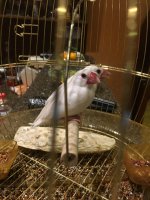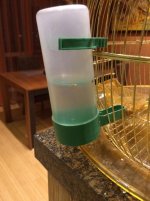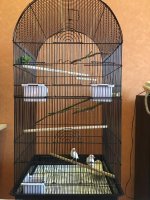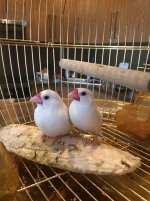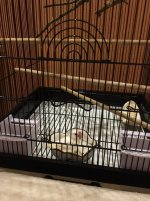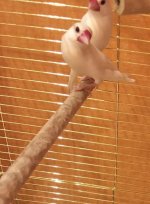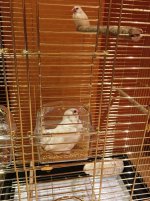Hi newbie here.
I just adopted a pair of parrots, was told they are male and female. A mix of birds seeds and minerals came with them as well. I guess I'm fine before they run out.
I don't know what they called, the previous owner doesn't know much about them; their image is attached.
Since I don't have much experience keeping birds I need a help to identify them and to know about their maintenance and health care, food etc. Should I cover their cage with a cloth before they sleep at night?
I guess this is enough for start but later I will come up with more questions such as if they can set free in the room for certain hours a day etc...
Thank you in advance for your help!
I just adopted a pair of parrots, was told they are male and female. A mix of birds seeds and minerals came with them as well. I guess I'm fine before they run out.
I don't know what they called, the previous owner doesn't know much about them; their image is attached.
Since I don't have much experience keeping birds I need a help to identify them and to know about their maintenance and health care, food etc. Should I cover their cage with a cloth before they sleep at night?
I guess this is enough for start but later I will come up with more questions such as if they can set free in the room for certain hours a day etc...
Thank you in advance for your help!
Attachments
Last edited:
